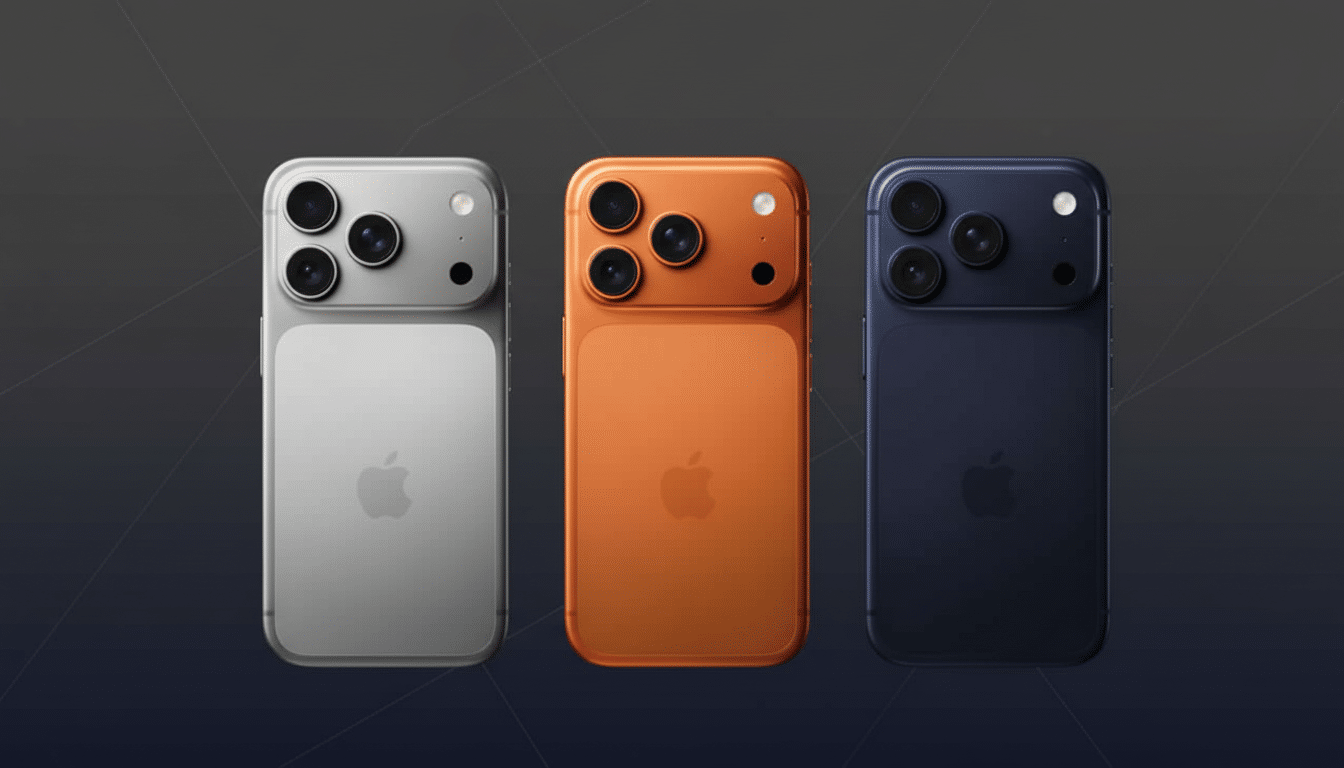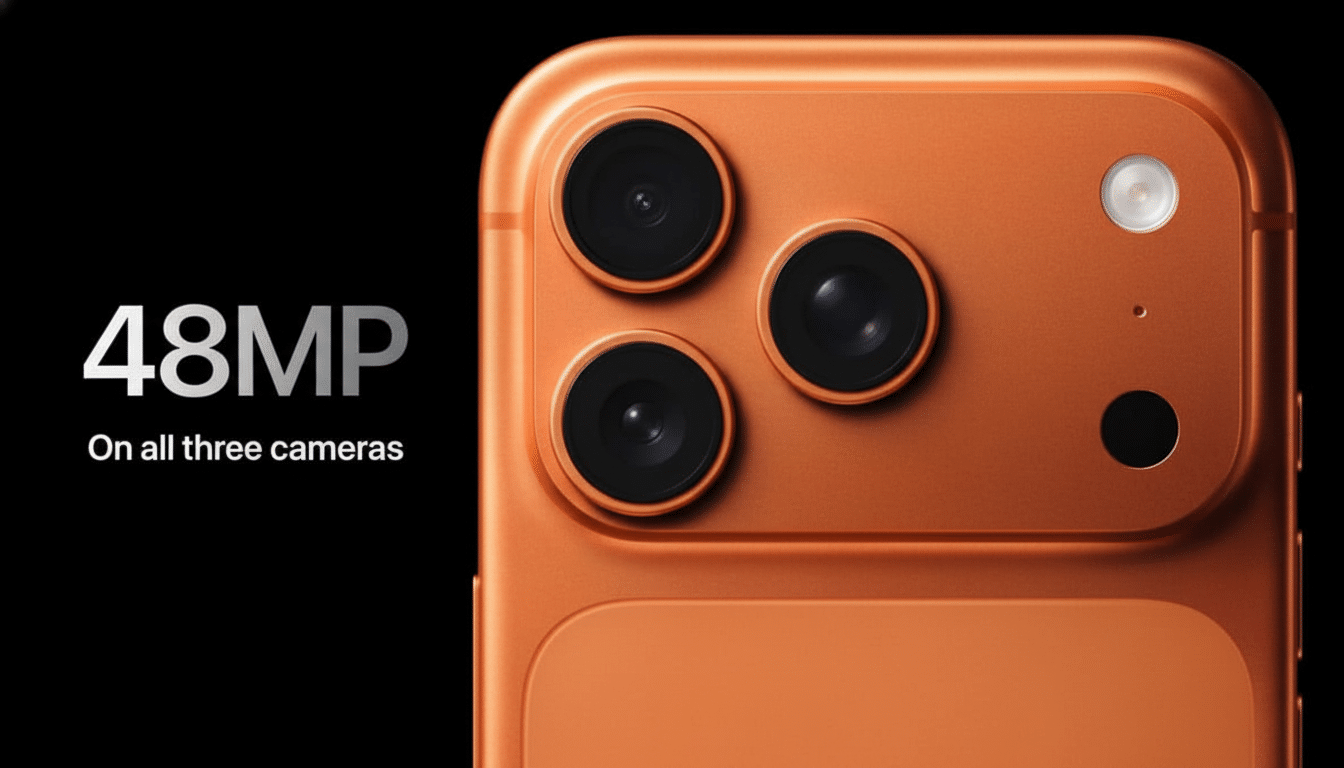There’s a lot that will be familiar about Apple’s latest iPhone 17 Pro Max, but for some people the most important thing is what hasn’t changed. If you’re thinking about 17 Pro Max versus last year’s 16 Pro Max, the headliner differences include brighter display performance, a new longer reaching camera system, a weighty battery life lift, and a materials rethink that reaches into durability and cooling.
Design and durability
The 16 Pro Max’s titanium frame has been replaced with an aluminum unibody, and there’s now Ceramic Shield 2 on both the front and the back of the iPhone 17 Pro Max. Apple presents this as a sturdier, more impact resistant combo, and the re-shaped “camera plateau” (Apple’s phrase) provides the rear with a more integrated and cleaner look. New colors — Silver, Cosmic Orange and Deep Blue — indicate the generation leap with just a look.

This material turn is not just cosmetic. Aluminum can assist with dissipating heat more evenly, which plays nicely with the phone’s upgraded vapor chamber cooling. In practical terms, that should mean more consistent performance during long 4K shooting and gaming sessions, during which the 16 Pro Max might get warm enough to throttle under a sustained load.
Display: same sizes, even brighter outside
Both phones retain the 6.9-inch ProMotion display and familiar Dynamic Island, but the 17 Pro Max improves visibility in daylight. It’s rated at 1,000 nits max brightness, typical, 1,600 nits peak HDR brightness and 3,000 nits in bright sunlight, all according to Apple. Outdoors, the 16 Pro Max maxes out at 2,000 nits. That extra headroom can be seen when skimming maps in the harsh sun, or similarly framing photos on a bright field.
While lab measurements from third-party testers such as DisplayMate will dissect the finer points (color volume, reflectance and ABL behavior), the practical takeaway is straightforward: on the 17 Pro Max, content stays punchy and legible longer before glare proves victorious.
Performance, storage, and connectivity
Under the hood Inside, the iPhone 17 Pro Max evolves to the A19 Pro chip from Apple and a new N1 wireless subsystem.
Apple doesn’t release full architectural details, but the generation bump generally brings faster CPU and GPU throughputs and a more powerful on-device Neural Engine. That’s good for things like real-time photo pipeline work, voice features and background indexing without chewing up battery.
Storage tiers still begin at 256GB, but the 17 Pro Max tacks a 2TB option onto the top for creators who make their home in ProRAW photos or ProRes video. For perspective, one minute of 4K ProRes 60fps can easily clock in at several gigabytes (and then some), so doubling last year’s cap substantially mitigates offloading headaches on location.
The N1 chip combines the duty of wireless for more efficient and stable use. In crowded places like stadiums or tradeshow halls, better handoffs and more-aggressive power management are the type of invisible upgrade you feel over months, not minutes. Wireless network engineers at carriers frequently point to radios and software optimization being as important to perceived speeds as the raw modem specifications.

Cameras: better reach and more front detail
The most notable practical difference: the 17 Pro Max moves to a triumvirate of 48-megapixel rear cameras and provides up to 8x “optical-quality” telephoto photography. The 16 Pro Max had a 48MP main, 48MP ultra-wide, and a 12MP telephoto with 5x optical-quality zoom. At the front, the new model boasts a 12MP selfie camera, up from 18MP in the new addendum.
What does that look like on the ground? From the back row at a school play or the midfield at a soccer game, the 17 Pro Max can keep faces sharper out a longer focal lengths without leaning as hard on digital interpolation. And with three 48MP sensors supplying Apple’s computational stack, fine textures — hair, fabric, foliage — hold up better after cropping. Entities such as DxOMark love to laud consistency at different focal lengths as a point of higher ranking: the 17 Pro Max is here to improve the existence of just that.
Thermal improvements matter here too. Vapor chamber cooling, meanwhile, means the 17 Pro Max should be able to handle heat- from 4K/60 ProRes recording to long low-light bursts — better than most mobile filmmakers and action shooters would have been used to.
Battery life and charging
According to Apple’s estimates, that’s a solid endurance gap: up to 39 hours (local video) and 35 hours (streaming video) on the 17 Pro Max, versus 33/29 hours on the 16 Pro Max. Vapor chamber cooling and smarter power management let the A19 Pro run hard without really spiking consumption, and apart from the bigger battery it’s really the latter than gives it any kind of edge over last year’s A18 Pro.
Charging is quicker, too. With a 40W adapter or higher, the 17 Pro Max can reach 50% after around 20 minutes. The 16 Pro Max will generally hit 50% on a fast charger in about 30 minutes. For travelers and field crews, that 10-minute delta can be the difference between boarding a flight with five minutes of juice to spare and babysitting an outlet.
Pricing and value
Pro and Pro Max Start prices stay familiar for the Pro line, which does keep the decision purely one of capability. If you value long-lens shooting abilities, longest-possible battery life and more sustained performance in the heat, the 17 Pro Max is the more futureproof choice. If you’re upgrading from a 16 Pro Max and don’t require 8x reach, 2TB local storage, or quicker top-ups, last year’s model continues to be a powerful — now better-priced — alternative, backed by the same strong resale value often cited by market trackers like Counterpoint Research.
The short answer: the iPhone 17 Pro Max raises the bar where professional users and power users will appreciate it: camera reach, longevity, and thermal stability, without the experience being overhauled.
For a lot of people, that’s exactly the sort of upgrade that justifies its place.

